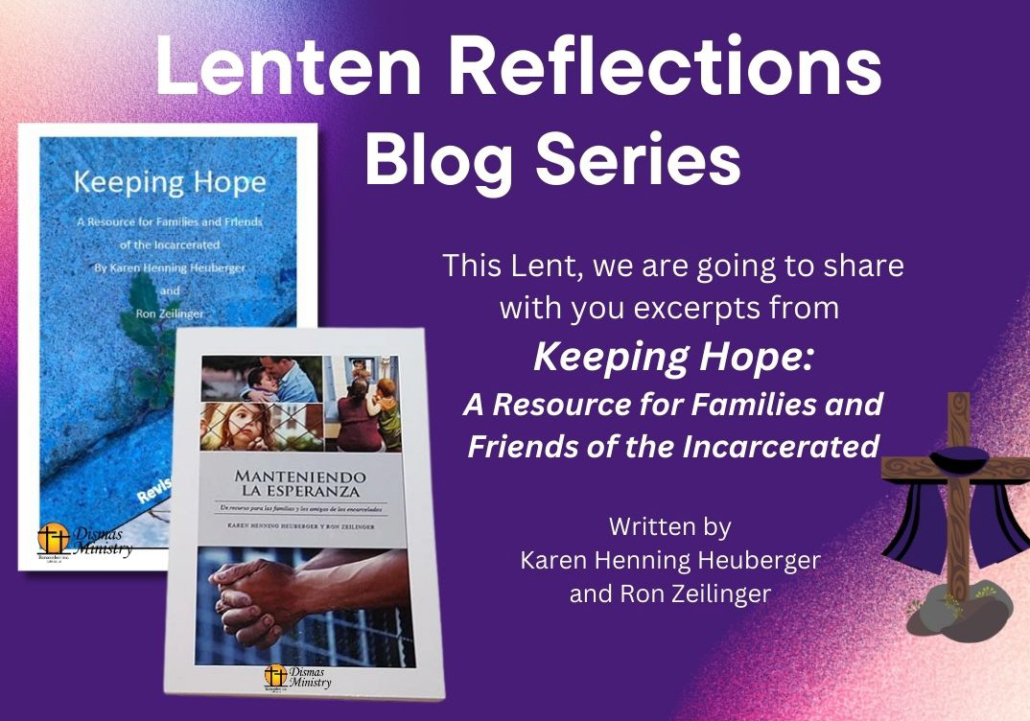This Lent, we are going to share with you excerpts from Keeping Hope: A Resource for Families and Friends of the Incarcerated
Written by Karen Henning Heuberger and Ron Zeilinger
“Children and Visiting”
If your loved one is allowed to have visitors who are minors, there are things you can do to prepare the children for the visit. If possible, make a visit yourself without the children first, so – according to their ages – you can tell them what to expect, explaining what it is like inside, and explain the basic rules. Answer any questions they may have. You may want to coach them on what to say to your loved one if there are sensitive topics that need to be avoided. Make sure they meet all the requirements to enter (appropriate clothing, etc.) so there is no added stress when it comes to seeing their loved one. Department of Corrections websites can give you further information on children and visiting. Some institutions require specific forms for minors that are available online.

Some correctional facilities are more family-friendly than others. Many of them have rooms where there are games, puzzles, and toys that can be checked out and used. Families can sit in chairs to visit, so it isn’t so scary for the children. Playing games with their loved ones can make the visit seem more normal. Some facilities even have a courtyard with tables and a playground.
In some facilities the correctional officers go out of their way to talk, and even joke, with the children so they feel more comfortable. At Christmas time, Santa may visit the children at some facilities. Many facilities have a restaurant where families can eat together. All of these facets can help make the children more at ease when they visit their loved one.
 Other facilities do not provide these features. Depending on the security level or other factors, children may not be able to touch their loved one. The visit may be through glass or over a video screen. However the children connect with their loved one in a visit, prepare them ahead of time so they know what to expect.
Other facilities do not provide these features. Depending on the security level or other factors, children may not be able to touch their loved one. The visit may be through glass or over a video screen. However the children connect with their loved one in a visit, prepare them ahead of time so they know what to expect.
After you leave the facility, talk with the children and reassure them their loved one is safe. Help them remember the best parts of the visit. In between visits, help the children write letters to their loved one, or have them draw pictures if they are too young to write letters. If it is allowed, let them talk with their loved one on the phone as well.

READ MORE FROM KEEPING HOPE BY PURCHASING YOUR COPY ON OUR STORE PAGE.




